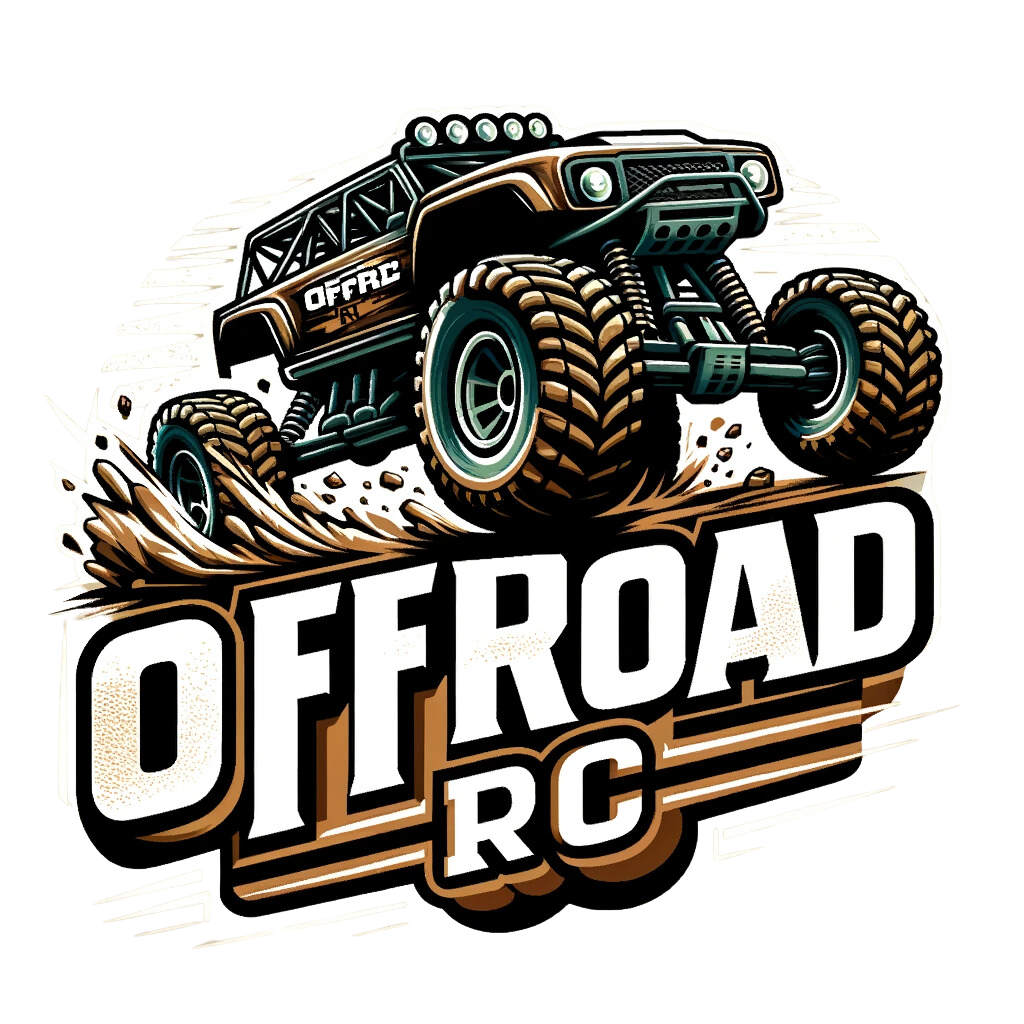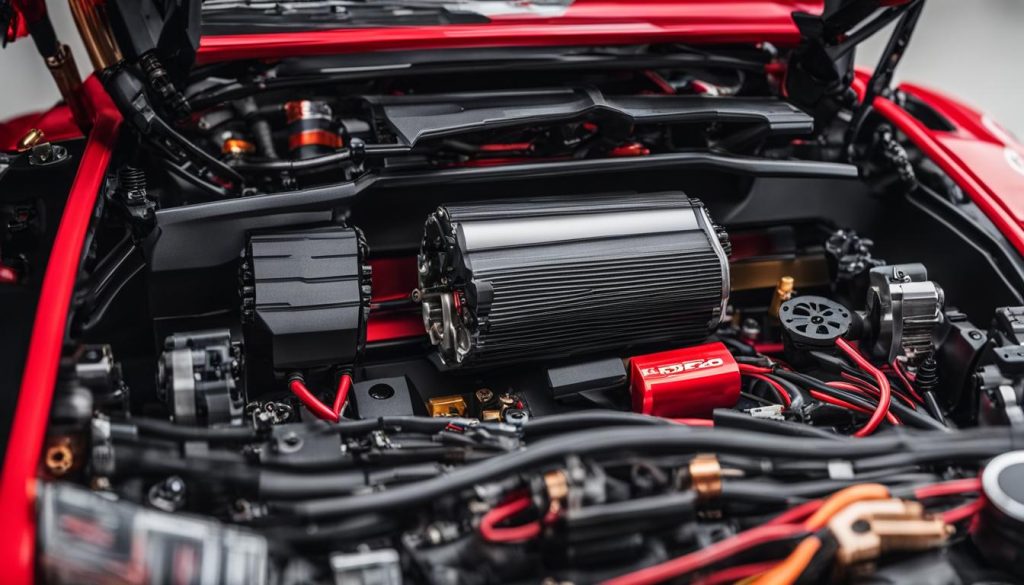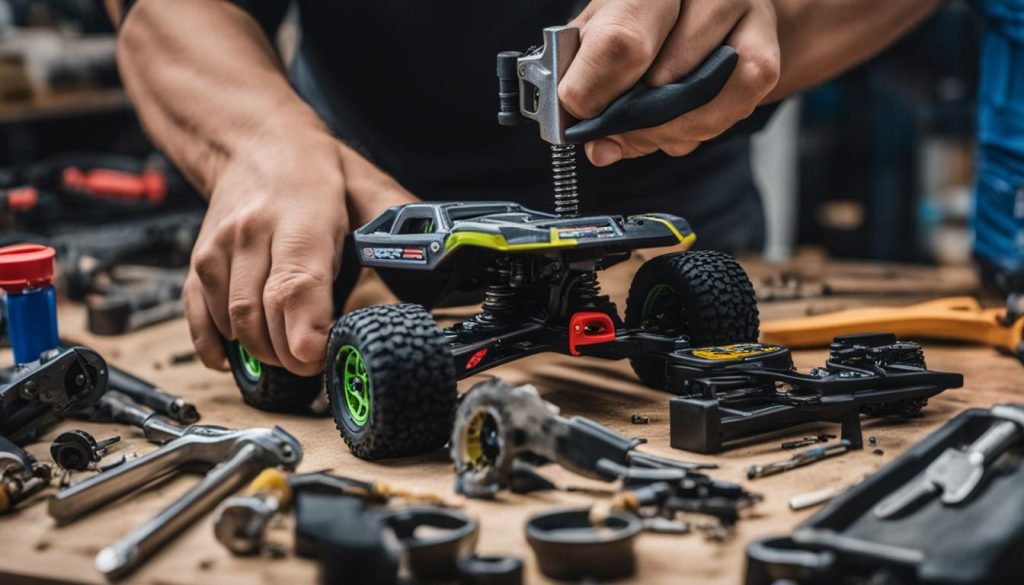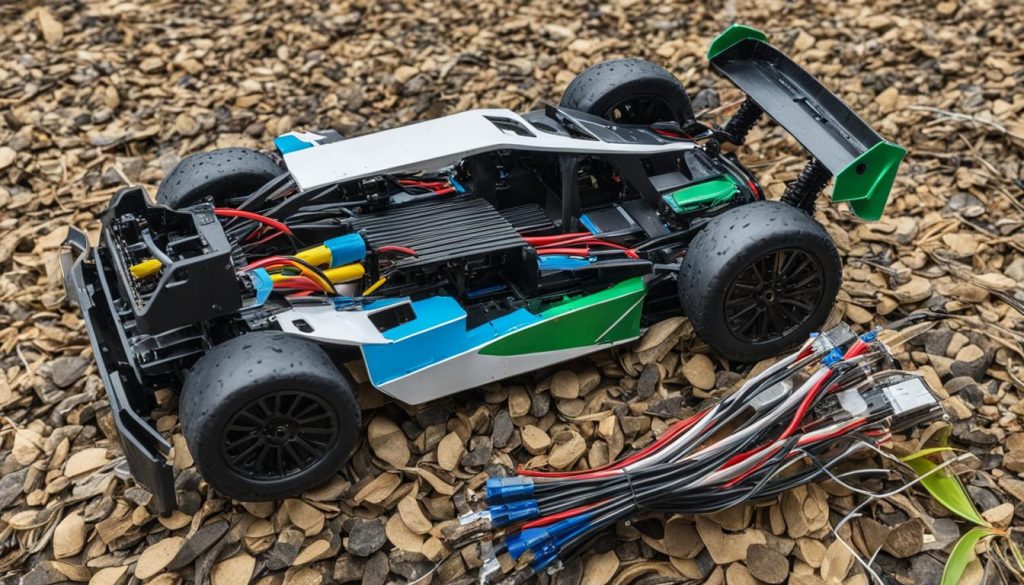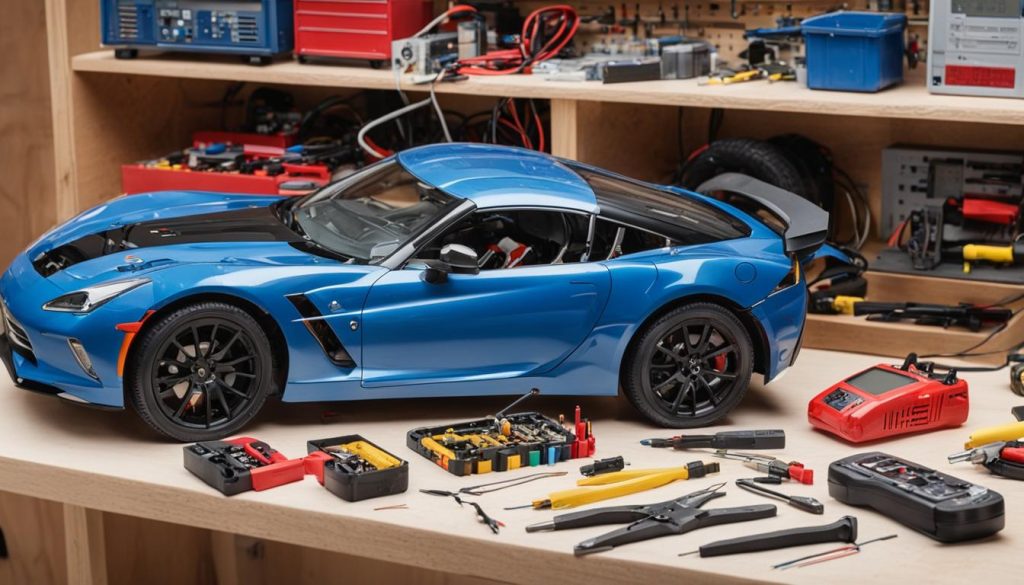Adding more power to your RC car is easier than ever before. With the right upgrades and modifications, you can significantly increase your car’s speed and performance. In this article, we will explore nine recommendations for boosting the power of your RC vehicle. These tips include upgrading the batteries, installing a brushless motor, playing with the gear ratio, trying different tires, modifying the motor timing, fixing up the suspension, practicing your cornering skills, swapping out the bearings, and cleaning the existing bearings. By following these tips, you can take your RC car to new levels of speed and excitement.
Key Takeaways:
- Upgrade the batteries to improve their performance and increase speed.
- Install a brushless motor for faster and more efficient power.
- Experiment with different gear ratios to find the optimal balance between power and speed.
- Choose tires suitable for your driving conditions to improve traction and performance.
- Adjust the motor timing to increase RPM figures and overall power output.
Upgrade The Batteries
Upgrading the batteries of your RC car is a simple yet effective way to add more power and performance. By replacing the Ni MH battery pack with a more powerful and lighter Li-Po battery, you can increase the speed and acceleration of your car. However, it’s important to ensure that your car can handle the upgraded battery and that it is compatible with the model. Upgrading the batteries can provide a significant boost to your RC car’s performance.
When considering an RC car battery upgrade, there are a few key factors to keep in mind. First, look for higher capacity batteries that can hold more charge. These batteries offer longer run times, allowing you to enjoy extended play sessions without interruptions. Second, consider investing in lighter batteries. Lighter batteries can reduce the overall weight of your RC car, resulting in improved speed and maneuverability.
Two popular types of batteries used in RC cars are Li-Po (Lithium Polymer) and Ni MH (Nickel Metal Hydride). Li-Po batteries are lightweight, have higher voltage ratings, and can deliver more power. On the other hand, Ni MH batteries are more affordable and have longer life spans. It’s crucial to consider the specifications and limitations of your model to ensure compatibility with the chosen battery type.
| Battery Type | Advantages | Disadvantages |
|---|---|---|
| Li-Po (Lithium Polymer) |
|
|
| Ni MH (Nickel Metal Hydride) |
|
|
Before upgrading the batteries, it’s essential to check compatibility with your RC car model. Some models may require specific battery sizes or configurations. Additionally, ensure that the upgraded battery is compatible with the charger you own. Using an incompatible charger can lead to damage or reduced performance.
Installing a Brushless Motor
Many ready-to-run (RTR) RC car models come with brushed motors, which are designed for beginners and offer easier handling. However, if you want to increase the speed of your car, installing a brushless motor can make a world of difference. Brushless motors are typically faster and more efficient, but they may require some adjustment in terms of handling.
Firstly, it’s important to choose a brushless motor that is suitable for your car. Consider factors such as motor size, power rating, and compatibility with your RC car model. Brushless motors come in various sizes, so make sure to select one that fits your car’s specifications. Consulting with experts or referring to the manufacturer’s guidelines can help you find the perfect match.
Next, proper motor cooling is essential to prevent overheating. Brushless motors generate more power and heat than brushed motors, so they require efficient cooling mechanisms. Some brushless motors come with built-in cooling features like cooling fans or heat sinks. If not, you can add aftermarket cooling accessories to ensure optimal performance and longevity of your motor.
Proper motor handling is also crucial when using a brushless motor. These motors have higher RPM (rotations per minute) and torque compared to brushed motors, resulting in a different driving experience. Ensure that you adjust your driving style to accommodate the increased power and speed. Gradually familiarize yourself with the car’s enhanced capabilities to maximize performance while maintaining control.
In summary, upgrading to a brushless motor can unlock incredible speed and performance in your RC car. Just remember to select a motor compatible with your car, provide adequate cooling, and adapt your driving style to harness the motor’s power. Enjoy the exhilarating experience of high-speed RC car racing with a brushless motor upgrade.
Playing With the Gear Ratio
Adjusting the gear ratio of your RC car is a key factor in fine-tuning its power and speed to suit your preferences. The gear mechanism of RC cars is relatively straightforward, consisting of a pinion gear and a spur gear. By understanding the relationship between these gears, you can optimize the performance of your RC car.
A pinion gear with more teeth generates greater power and speed, while a smaller spur gear can have a similar effect. This means that increasing the number of teeth on the pinion gear will result in more power and speed, while decreasing the size of the spur gear can achieve a similar outcome.
Experimenting with different gear sizes allows you to find the appropriate balance between power and speed for your specific RC car. Selecting the right gear ratio can maximize the performance of your car and enhance your overall driving experience. However, it’s important to note that changing the gear ratio may also affect other aspects of your RC car, such as acceleration and torque.
Here is an example of how adjustments to the gear ratio can impact your RC car’s speed:
| Gear Ratio | Speed |
|---|---|
| Lower Gear Ratio | Increased speed |
| Higher Gear Ratio | Decreased speed |
By experimenting with different gear ratios, you can find the optimal configuration that suits your driving style and track conditions.
The image above visually represents the gear mechanism of an RC car and highlights the importance of choosing the appropriate gear size to achieve the desired power and speed.
Trying Out Different Tires
The tires of your RC car play a crucial role in its performance and speed. Different road surfaces require different tire types and compounds.
- Smooth tires are ideal for greater speed on ceramic tile or smooth surfaces.
- Mini pins provide better traction on carpeting.
- Knobby tires are suitable for racing on outdoor spaces.
Choosing the right tires for your specific driving conditions can greatly improve the speed and overall performance of your RC car.
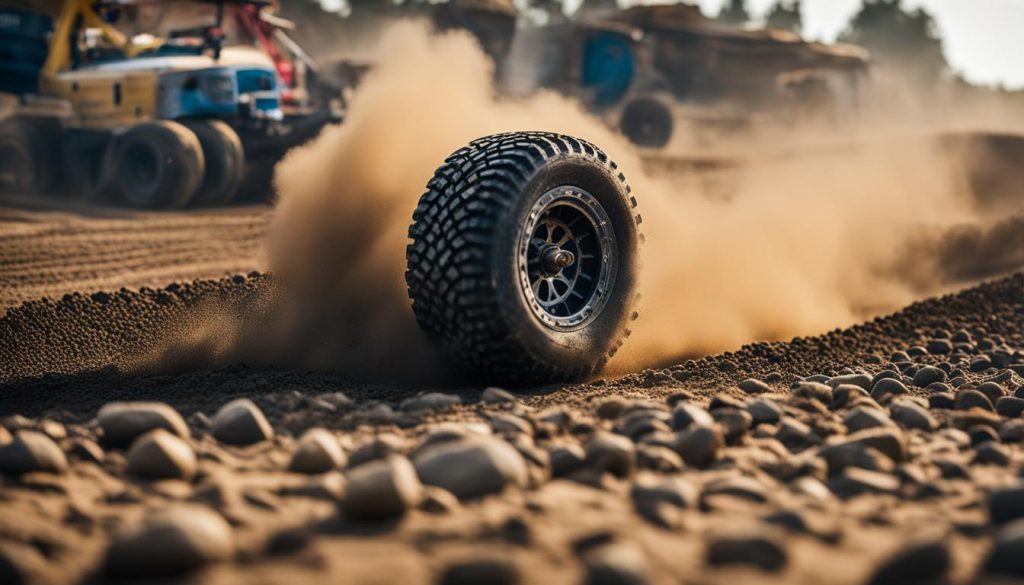
Modify the Motor Timing
Adjusting the motor timing of your brushless motor can have a significant impact on the performance and speed of your RC car. By optimizing the motor timing, you can increase the RPM figures and overall power output, leading to a thrilling driving experience.
Similar to timing adjustments in real-world automobiles, modifying the motor timing requires careful consideration to achieve the desired results. But before delving into the adjustment process, it’s crucial to ensure that the motor receives sufficient cooling to prevent overheating.
Motor cooling is essential to maintain optimal performance and prevent damage. Brushless motors generate heat during operation, so it’s vital to implement effective cooling mechanisms such as heat sinks, cooling fans, or air vents. This will prevent the motor from reaching high temperatures and ensure its longevity in the long run.
Once you’ve addressed the cooling aspect, you can proceed with modifying the motor timing. This adjustment determines the timing at which the motor’s magnets align with the electromagnetic field, maximizing power output and efficiency.
Although the specific steps for motor timing adjustment may vary depending on the manufacturer and model, here is a general guide to help you get started:
- Refer to the instruction manual for your brushless motor to familiarize yourself with its specific timing adjustment procedure.
- Locate the motor timing sensor wire on your motor. This wire is typically labeled and connected to the ESC (Electronic Speed Controller).
- Make note of the default motor timing setting, if applicable.
- Using a suitable tool, adjust the motor timing by rotating the motor’s position sensor or adjusting the timing control on the ESC.
- Test the motor after each adjustment to evaluate its performance. Monitor the RPM figures and motor temperature to ensure they remain within the recommended range.
- Iterate the process until you achieve the desired balance between power and temperature.
Experiment with different motor timing settings to find the optimal configuration for your RC car’s power and speed. Remember to carefully monitor the motor’s temperature during testing to avoid overheating and potential damage.
Adjusting the motor timing is a valuable technique that, when done correctly, can unleash the full potential of your brushless motor. Enjoy the increased power and exhilarating performance of your RC car as you take control of the track!
Fix Up the Suspension
The suspension of your RC car is a critical component that greatly influences its stability and handling. To ensure optimal performance, it’s important to regularly clean and maintain the suspension system, particularly the shock absorbers.
Dust and debris can accumulate on the shock absorbers over time, affecting their ability to absorb impacts and maintain a smooth ride. To remedy this, carefully remove any collected dust and debris from the shock absorbers using a soft brush or compressed air. This simple maintenance step can significantly improve the suspension action and overall performance of your RC car.
In addition to cleaning, it’s also crucial to check and tighten any loose suspension parts. Over time, vibrations and normal wear and tear can cause bolts and screws to become loose, which can adversely affect the stability and handling of your RC car. Regularly inspect and tighten these parts to keep the suspension system in optimal condition.
Furthermore, consider using shock and differential oil to further enhance the performance of your RC car’s suspension. These specialized oils help to lubricate the suspension components, reducing friction and ensuring smooth operation. Consult your RC car’s manual or seek advice from experienced hobbyists to determine the appropriate shock and differential oil for your specific model.
Keep in mind that each RC car model may have its own unique suspension design and requirements, so it’s important to consult the manufacturer’s instructions or seek guidance from knowledgeable individuals for specific maintenance procedures and troubleshooting.
“Regular cleaning and maintenance of your RC car’s suspension system, including the shock absorbers, can significantly enhance its performance and ensure a smooth and stable ride.”
Summary:
- Clean the dust and debris from the shock absorbers to maintain optimal performance.
- Tighten any loose suspension parts to ensure stability and handling.
- Consider using shock and differential oil for smoother suspension operation.
- Consult the manufacturer’s instructions or seek guidance for specific maintenance procedures.
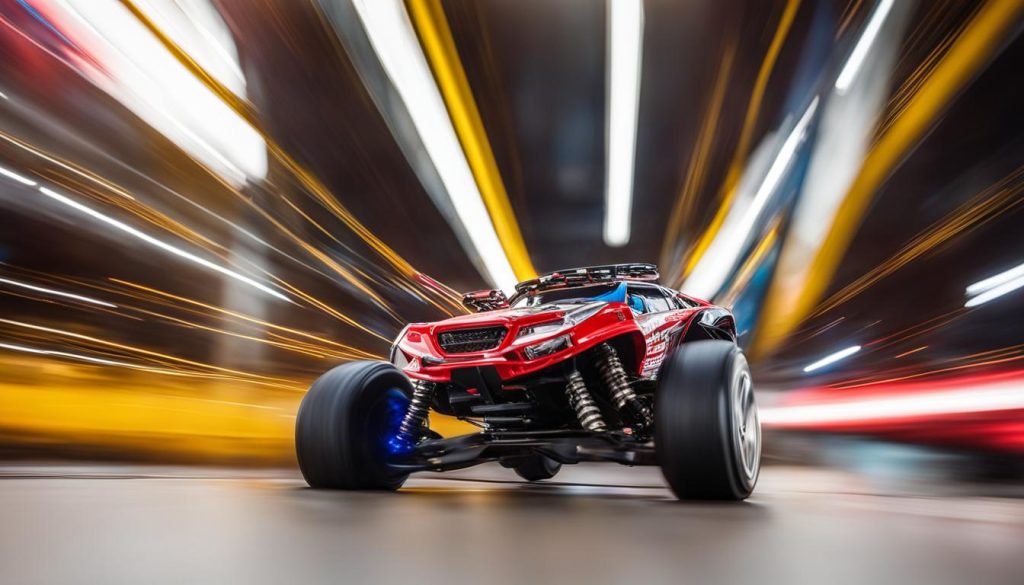
Practice Your Cornering Skills
Improving your cornering skills is crucial when it comes to maximizing the speed and performance of your RC car. By honing your driving skills and mastering track navigation, you can take your racing to the next level. One of the key techniques to focus on is cornering, which involves maneuvering your car smoothly and efficiently around tight turns.
When approaching a corner, it’s important to position your RC car on the inside of the track. This allows you to take a shorter racing distance, minimizing the time it takes to complete a lap. By hugging the inside line, you can maintain better control of your car and prevent it from sliding or spinning out.
Cornering speed is another essential factor to consider. Finding the right balance between speed and control is crucial for maintaining stability and keeping your car on track. Experiment with different cornering speeds to find the optimal balance that allows you to navigate turns smoothly while maintaining maximum speed.
Practicing your cornering skills on different types of tracks and surfaces can also improve your overall performance. Each track presents unique challenges, and understanding how your car handles specific turns and surfaces is key to achieving optimal performance. By learning the limits of your RC car’s cornering capabilities, you can push them to the edge without losing control.
Remember, practice makes perfect when it comes to cornering. The more time you spend on the track, the more comfortable and skilled you’ll become. Make it a habit to dedicate a portion of your practice sessions to cornering drills, focusing on precision, control, and maintaining consistent speed.
Tips for Improving Your Cornering Skills:
- Study the track layout and plan your approach to each corner.
- Practice smooth braking and acceleration before and after each turn.
- Experiment with different racing lines to find the fastest route.
- Monitor your cornering speed and adjust as necessary.
- Stay focused on the track and anticipate upcoming turns.
- Observe experienced racers to learn from their techniques and strategies.
By consistently working on your cornering skills and incorporating these tips into your training routine, you’ll be able to achieve faster lap times, improved performance, and an exhilarating racing experience on the RC track.
“Good cornering is not only about speed, but about mastering control and finding the optimal racing line.” – RC Racing Pro
| Benefits of Practicing Cornering Skills | How It Improves Racing Performance |
|---|---|
| Improved lap times | By taking the shortest racing distance, you can complete laps faster. |
| Better control and stability | Mastering cornering techniques helps prevent spinning out and losing control of your car. |
| Increased speed on turns | Optimizing cornering speed allows you to maintain momentum and gain an advantage over other racers. |
| Reduced time loss | Efficient cornering minimizes the time spent navigating turns, resulting in faster overall race times. |
Swap Out the Bearings
Upgrading the wheel bearings of your RC car can greatly improve its speed and overall performance. High-performance wheel bearings reduce friction and enable smoother movement, resulting in increased speed. Even without replacing the entire wheel or axle, swapping out the bearings can make a noticeable difference in the performance of your RC car.
When it comes to choosing the right RC car bearings, it’s important to consider their compatibility with your specific wheel and axle setup. Make sure to select bearings that are designed to fit your car model and offer a precise fit.
When replacing the bearings, it’s recommended to opt for high-quality options that are specifically designed for RC cars. These high-performance wheel bearings are usually made from durable materials and are engineered to withstand the demands of RC car racing.
Once you’ve selected the appropriate bearings, the replacement process is fairly straightforward. Simply remove the old bearings by carefully detaching them from the wheel or axle, and then insert the new bearings in their place. Ensure that the new bearings are securely seated and properly aligned before reassembling the RC car.
Conclusion
By implementing these nine recommendations, you can easily boost the speed and performance of your RC car. Upgrading the batteries with higher capacity options and installing a brushless motor are excellent starting points to enhance the power of your vehicle. Experimenting with the gear ratio and trying out different tires can provide the perfect balance of power and traction for maximum speed. Don’t forget to modify the motor timing and fix up the suspension to optimize performance.
Practicing your cornering skills and swapping out the bearings are additional steps that can significantly improve your RC car’s speed and handling. By following these easy power upgrades and taking care of your RC car’s maintenance, you can enjoy a thrilling driving experience like never before.
So, why wait? Take your RC car to new levels of speed and excitement by applying these top tips for RC car speed. Enhance your RC car performance and dominate the racetrack with these simple yet effective upgrades. Get ready for heart-pumping action and exhilarating races!
FAQ
How do I upgrade the batteries of my RC car?
Upgrading the batteries of your RC car is a simple yet effective way to add more power and performance. By replacing the Ni MH battery pack with a more powerful and lighter Li-Po battery, you can increase the speed and acceleration of your car. However, it’s important to ensure that your car can handle the upgraded battery and that it is compatible with the model.
What are the benefits of installing a brushless motor in my RC car?
Installing a brushless motor can significantly increase the speed and performance of your RC car. Brushless motors are typically faster and more efficient than brushed motors, but they may require some adjustment in terms of handling. It’s important to choose a brushless motor that is suitable for your car and ensure that it receives proper cooling to prevent overheating.
How does adjusting the gear ratio affect the power and speed of my RC car?
Adjusting the gear ratio of your RC car can have a significant impact on its power and speed. A larger pinion gear with more teeth generates more power and speed, while a smaller spur gear can provide the same effect. By experimenting with different gear sizes, you can find the optimal balance between power and speed for your car.
How can different tires improve the speed of my RC car?
The tires of your RC car play a crucial role in its performance and speed. Choosing the right tires for your specific driving conditions can greatly improve the speed and overall performance of your RC car. Smooth tires are ideal for greater speed on ceramic tile or smooth surfaces, while mini pins provide better traction on carpeting. Knobby tires are suitable for racing on outdoor spaces.
Can modifying the motor timing increase the power output of my RC car?
Yes, modifying the motor timing of your brushless motor can significantly increase the RPM figures and overall power output of your RC car. However, it’s important to ensure that the motor receives sufficient cooling to prevent overheating. Modifying the motor timing can be a highly effective way to improve the horsepower of your RC car.
How can fixing up the suspension improve the performance of my RC car?
The suspension of your RC car plays a crucial role in its stability and handling. By cleaning and maintaining the suspension components, such as shock absorbers, you can ensure optimal performance. Removing dust and debris, tightening loose parts, and considering the use of shock and diff oil can greatly improve the suspension action and overall performance of your RC car.
How can practicing cornering skills enhance the speed of my RC car?
Improving your cornering skills is an essential aspect of maximizing the speed and performance of your RC car. By practicing controlled and precise cornering techniques, you can avoid spinning out and reduce the time it takes to navigate a track. Staying on the inside of the track and taking corners at an appropriate speed can significantly improve your lap times and overall racing performance.
Can swapping out the bearings improve the speed of my RC car?
Yes, upgrading the wheel bearings of your RC car can greatly improve its speed and overall performance. High-performance wheel bearings reduce friction and enable smoother movement, resulting in increased speed. Even without replacing the entire wheel or axle, swapping out the bearings can make a noticeable difference in the performance of your RC car.
